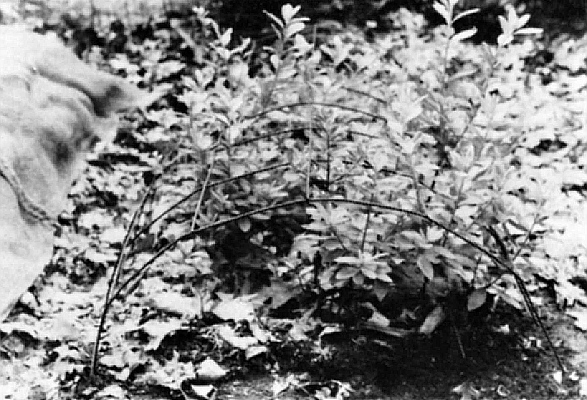Over Wintering Newly Rooted Azaleas
Mark Konrad, Sewickley, PA
Over wintering your plants outdoors can be one of the most difficult horticultural exercises. It takes only a short time to become painfully aware of this since plants are lost for a variety of reasons. Bark splitting on newly rooted azaleas is particularly aggravating. The easiest way to prevent the problem is to use a greenhouse or other protective shelter, but unfortunately none are completely free of disadvantages or is inexpensive.

|
| Fig. 1 Burlap over curved fencing |
For that reason I would like to present the following method which I have found very helpful. Fig. 1 shows fencing in a curved design with a reclaimed burlap sac for a covering.
Other than a leaf mulch nothing else was used. Much to my surprise the newly rooted cuttings stayed green the entire winter, even though the weather was harsh with a heavy snow cover. Losses were negligible. Fig. 2 shows the fencing in place over the azaleas while demonstrating the growth which occurred the following season.

|
| Fig. 2 Curved fencing with burlap removed |
Perhaps the exclusion of direct sunlight is the most important ingredient for the above success. But whatever the reason, I believe it could also be helpful in over wintering young rhododendron. In addition the method might be valuable for newly rooted plants in spring and summer. Reducing the light intensity and air movement helps to retain ground moisture while increasing surface humidity following watering.